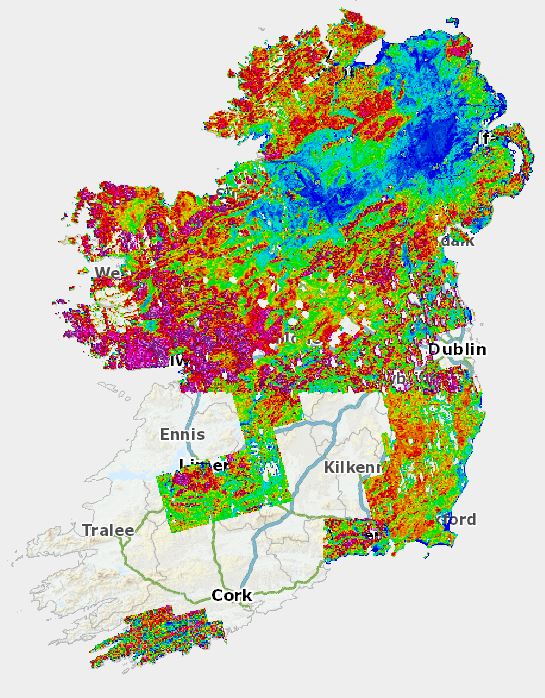Why ShallowTHERM?
Designing and installing vertical closed loop ground source heat exchangers, requires thermal properties of the subsurface to be determined. Key factors that affect the efficiency of a closed loop collector are the actual design and completion of the borehole and to the presence of groundwater .
Long term operational efficiency is controlled by the thermal conductivity of the bedrock and the average ground temperature. Previous research has demonstrated that whilst average ground temperature in Ireland is documented, thermal conductivity of rock is constrained only to areas where boreholes samples can be used to measure and test using laboratory equipment. These data in Ireland are spatially limited and not widely accessible to engineering and geoscientific professionals involved in the design of ground source collectors in Ireland.
Incorrectly sized ground source collectors can result in:
a) undersized collectors – leading to increased pumping costs as the system tries to extract heat from the ground resulting in reduced ground temperatures and collector efficiency over time; or
b) oversized collectors – these have potentially much lower environmental impact but the increased size can lead to higher pumping and running costs and lower seasonal performance factors.
A difference in thermal conductivity of 0.5 W/m/K can result in a minimum of 35% difference in collector length requirement.
The Tellus Airborne Electromagnetic (AEM) data (and the subsurface resistivity models derived from them), coupled with laboratory measurements of thermal conductivity of rock core samples, provides an opportunity to analyse the thermal properties of the subsurface and in turn, make an assessment of the thermal conductivity and heat-exchange potential of various selected areas across Ireland.
 At present, soil and rock thermal conductivity values are mapped as point-based data of the thermal conductivity from the various lithological units. The data points do not account for spatial changes in the mineralogy, porosity, permeability and water content of the lithological units – which are rock characteristics that AEM data are sensitive to and upon which rock thermal conductivity is also dependent on.
At present, soil and rock thermal conductivity values are mapped as point-based data of the thermal conductivity from the various lithological units. The data points do not account for spatial changes in the mineralogy, porosity, permeability and water content of the lithological units – which are rock characteristics that AEM data are sensitive to and upon which rock thermal conductivity is also dependent on.
In order to estimate thermal conductivity at a broader scale than provided by point measurements, a workflow integrating AEM data and lithology maps is being implemented as part of the project to define Litho-Electrical (LE) Units that can be identified and recognised as being distinct from each other based on both electrical and stratigraphic evidence. These LE Units will then be assigned thermal conductivity data from newly undertaken measurements and allow for mapping of key geothermal design properties for professionals.
Summary Objectives:
ShallowTHERM has 5 key objectives:
1 – Test an implement a workflow to integrate AEM geophysical data with liothological properties to characterise LE Units in up to 4 case study areas
2 – Measure and assign thermal conductivity values to the individual LE Units
3- Map the LE Units and Thermal Conductivity at regional scale in the case study areas
4- Derive heat exchange potential from closed loop ground collectors and recommend strategies for future mapping
5- Disseminate the project results to Irish and international stakeholders in the geothermal sector.
The ShallowTherm project has been supported with financial contribution from the Sustainable Energy Authority of Ireland under the SEAI National Energy Research, Development & Demonstration Funding Programme 2019, and Geological Survey Ireland (GSI) – Grant number 19/RDD/443. The project has also received in-kind contribution from GSI.